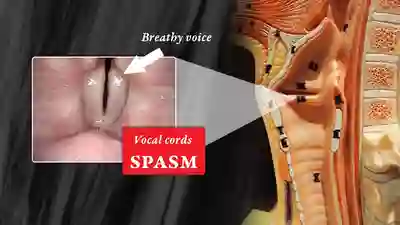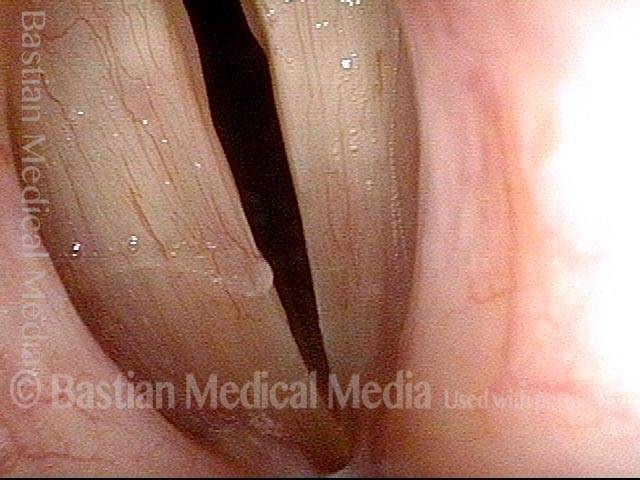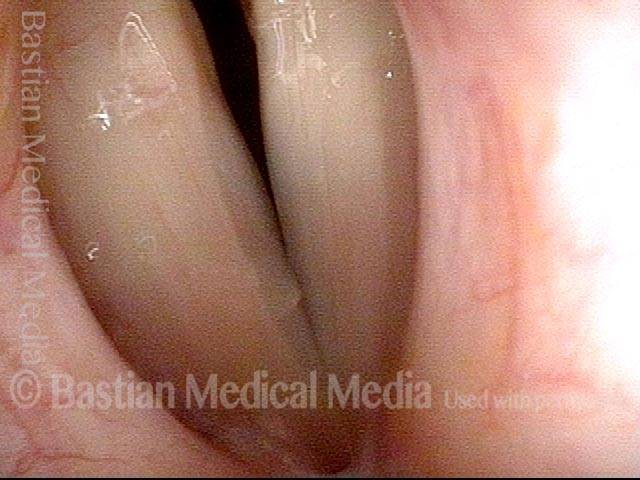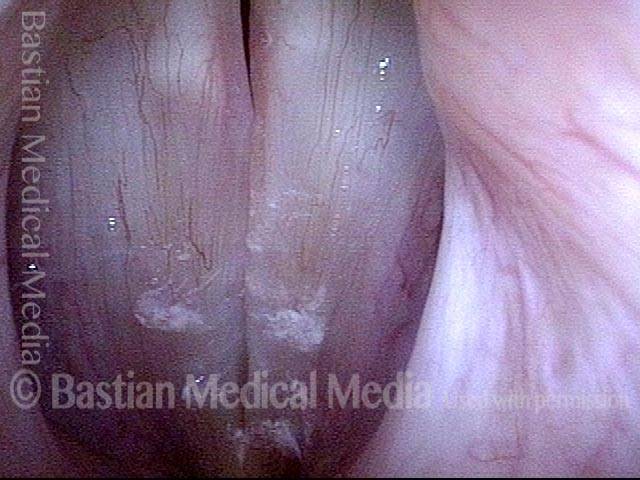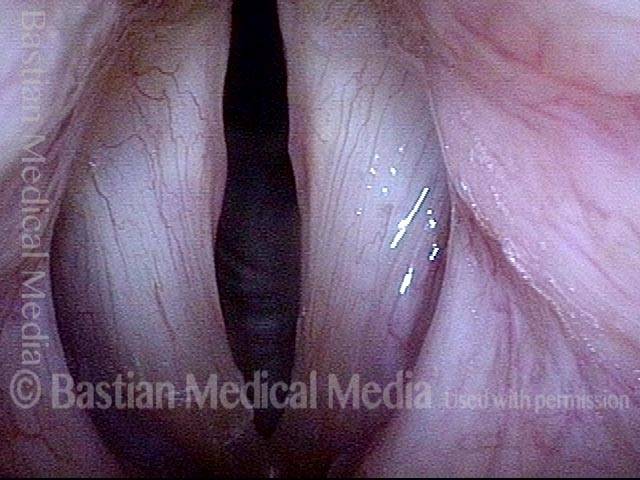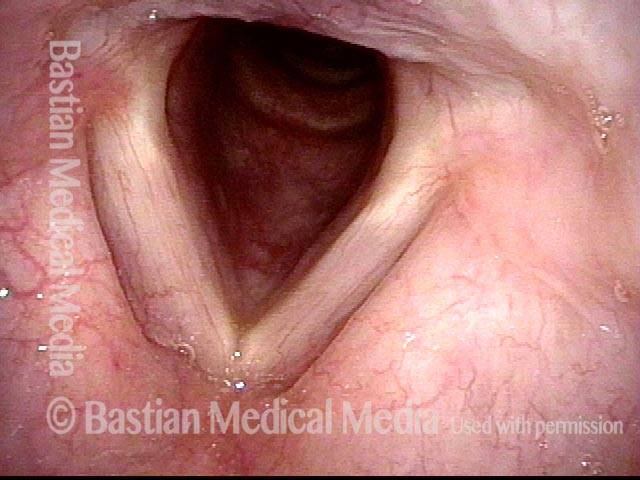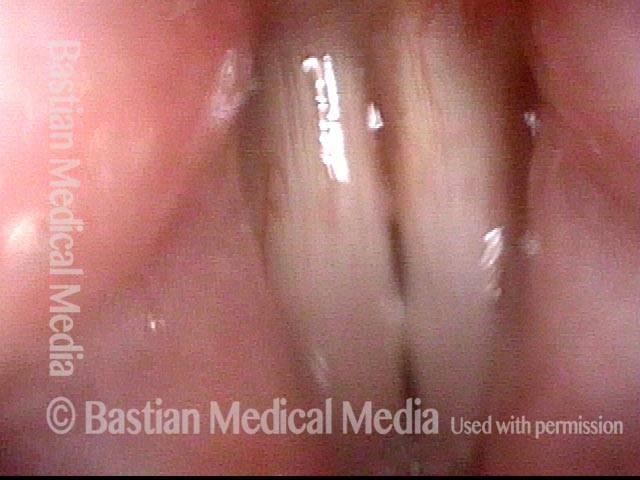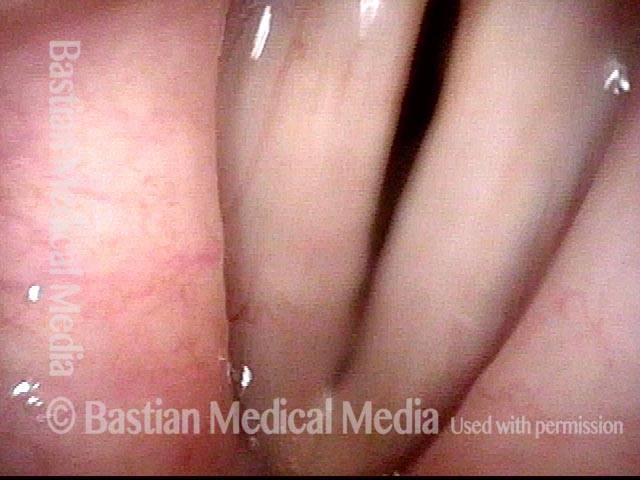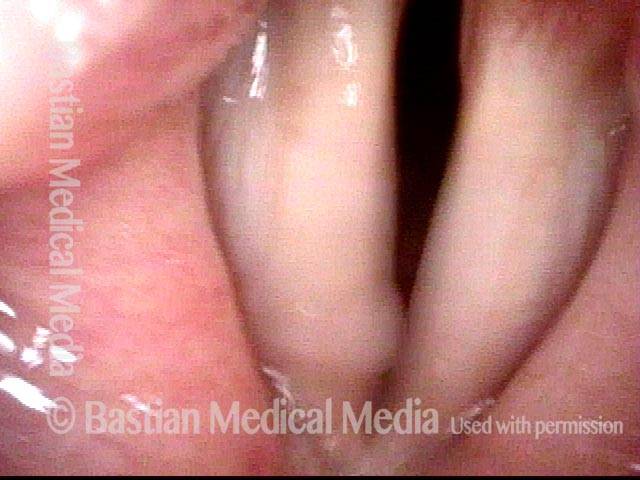Abductor Spasmodic Dysphonia (AB-SD)
A variant of spasmodic dysphonia in which the spasms pull the vocal cords apart, causing the voice to drop out or sound weak and breathy. Abductor spasmodic dysphonia (AB-SD) is an uncommon variant of spasmodic dysphonia, comprising only about 10% of the cases.
It is to be distinguished from adductor spasmodic dysphonia (AD-SD), a much more common variant in which the spasms push the vocal cords together.
Classic Variant AB-SD
In its classic variant, the abductory spasms of abductor spasmodic dysphonia are intermittent, each time pulling the vocal cords apart momentarily, so that a person’s voice drops out intermittently to a whisper or breathy sound. Hence, this classic variant of abductor spasmodic dysphonia is sometimes called intermittent whisper phonation.
Tonic Variant AB-SD
In its tonic variant, the abductory spasms are more constant and sustained than intermittent, so that instead of interrupting the person’s speech, the spasms produce a more constant breathy quality to the voice.
Other Variants
Occasionally, a person has both abductory and adductory spasms; this is called mixed AB-AD spasmodic dysphonia. For more about spasmodic dysphonia in general and the treatment options for it, see our main entry linked above.
Photo Examples
AB-SD (1 of 4)
AB-SD (1 of 4)
AB-SD (2 of 4)
AB-SD (2 of 4)
AB-SD (3 of 4)
AB-SD (3 of 4)
AB-SD (4 of 4)
AB-SD (4 of 4)
Abductor Spasms, Worsened by Cognitive Loading
Abductor spasmodic dysphonia patient (1 of 4)
Abductor spasmodic dysphonia patient (1 of 4)
Limited abductor spasms (2 of 4)
Limited abductor spasms (2 of 4)
Increased abductor spasms (3 of 4)
Increased abductor spasms (3 of 4)
Even greater abductor spasms (4 of 4)
Even greater abductor spasms (4 of 4)
Share this article
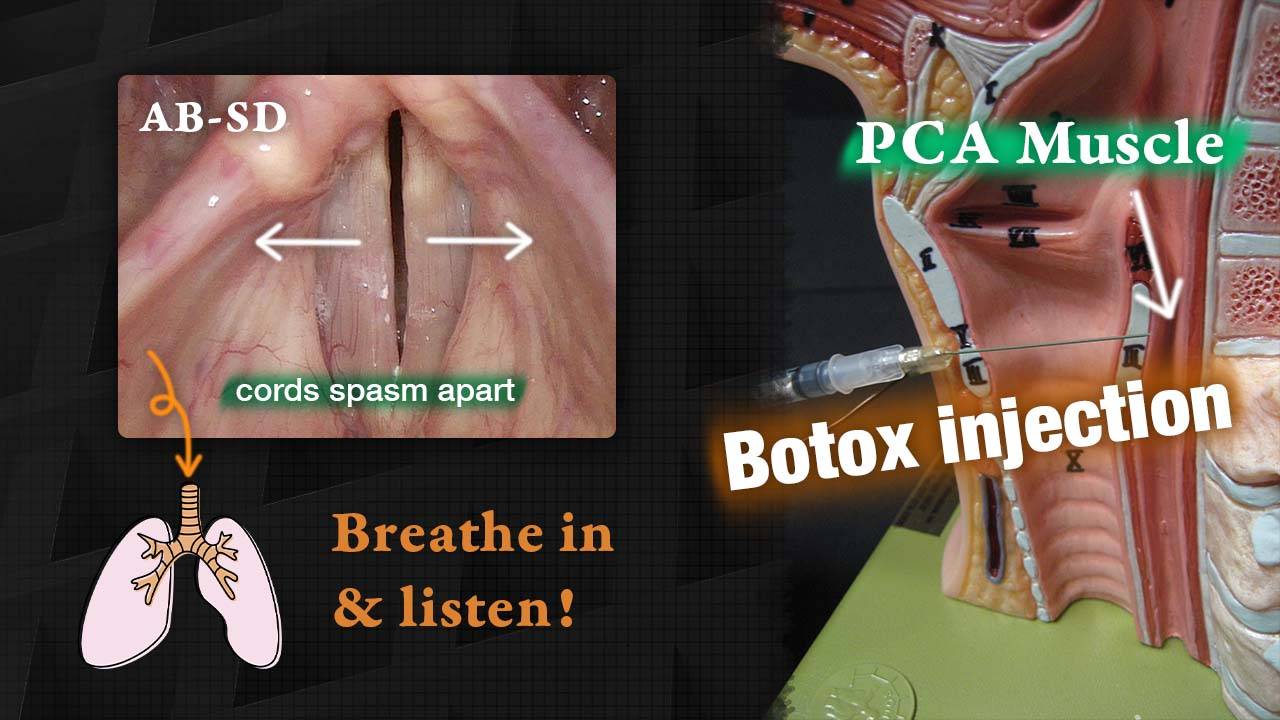
Vocal Cords Spasm Apart (AB-SD)
Syllables or words drop away to a whisper when a person is afflicted by the less common variant of a neurological disorder called AB-ductory spasmodic dysphonia (AB-SD).
Due to its effect on speech, it is sometimes called “intermittent whisper dysphonia.” In this video you will find a description of the disorder, its treatment with botox, and how to assess for proper dosage and placement of this medication.
